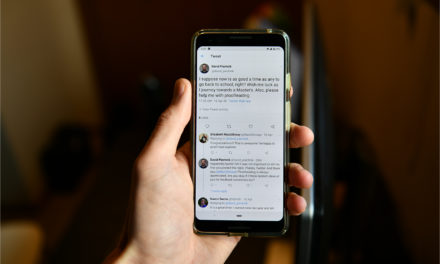I have come to discover that my educational background has created an ingrained desire for independent learning. While isn’t always a negative, it does come with its challenges. The ideas around transactional distance (Anderson & Dron, 2014), and the opportunity to place myself within their adapted transactional distance quadrants, showed me that I tend towards instruction that is low-structure/low-dialogue. My desire for independence in learning might be connected to a desire for “independence”, or desire to have no record, in my digital presence.
Within my digital presence I seem to favour communities that enable me to slip in and out without being noticed. These groups and sets (e.g., LinkedIn groups and Twitter hashtags) allow me to pick the content I need without having to invest time and effort into the conversation. This level involvement keeps me from being a contributing member of the community and may have negative consequences if it carries over into my MALAT group. My desire for individual freedom should not deter from our MALAT cohort creating a Community of Practice which will work together, build relationships, and share resources (Wenger, 1998).
References
Anderson, T., & Dron, J. (2014). Teaching Crowds: Learning and Social Media. Athabasca University Press. https://doi.org/10.15215/aupress/9781927356807.01
Wenger, E. (1998). Communities of Practice: Learning as a Social System. Systems Thinker, 9(5), 2-3. https://participativelearning.org/pluginfile.php/636/mod_resource/content/3/Learningasasocialsystem.pdf










David,
I wonder what your thoughts are on the Community of Inquiry model in the Developing Learning Environments readings. Specifically, there is a point about creating a learning environment that is:
“(a) respects interpersonal relationships;
(b) is able to provide critical feedback to community members; and
(c) celebrates a diversity of opinion”
I wonder after reading most, if not all, of your articles, is it the global learning community that dismays you from becoming part of the group conversation or the educational structure itself?
For me, it is a bit of both. I work very hard in my courses to create a positive online community (which I will now call a Community of Inquiry), but I feel that it is not the norm. Looking at the traditional hierarchy for the educational structure that is still the foundation for most education systems, it seems to me that, by definition, a hierarchy is not the best structure for encouraging healthy collaboration.
I believe you’re onto something, that it is potentially a bit of both. Since re-entering Twitter (for the 493rd time), I have been disappointed by how closed people are to different opinions or thoughts (shocking, right?). Whether the topic is education (letter grades are evil and anyone that disagrees is a moron!), the gradual reopening of services in Calgary (it’s happening too soon and if you think otherwise you probably want to kill people!), or really most any topic, the conversation is so closed to respect, critical feedback and diversity of opinion. I think what it comes down to is that I distrust the lack of relationship. In my earlier blog post I reference three elements of trust being “ability, benevolence, and integrity” (Meyer et al., 1995) and I think the part I find hardest to contend with in most open digital spaces is the benevolence. The idea that the people posting on Twitter/LinkedIn truly “care about the welfare of others” (Piechnik. 2020. Para. 4… yup, citing myself) may be true, but it is difficult to know outside or really knowing and understanding them as people.
On the other side, the educational structure is something that is still a bit weird to me, but I kind of get it. Maybe it’s because I come from a different industry, but most industries have some sort of hierarchy that keeps things orderly and focused. Sometimes they’re helpful, sometimes they’re awful. In my experience, the ones that have worked the best are those that respect autonomy and the need to just get things done. While I think there is some need for hierarchy in education, it works best when it includes that respect for intelligence and autonomy. People can get things done, and haven’t found myself to ever be all that successful if I’m relying on hierarchy to keep me moving.
Mayer, R. C., Davis, J. H., & Schoorman, F. D. (1995). An Integrative Model of Organizational Trust. The Academy of Management Review, 20(3), 709. https://doi.org/10.2307/258792
Piechnik, D. (2020, April 28). My verbose digital presence strategy. David Piechnik’s MALAT Blog. https://malat-webspace.royalroads.ca/rru0153/my-verbose-digital-presence-strategy/
Hi David,
I value low structure too, but I’ve never worked in a public education system, so I wonder if it’s the right environment for me. Is it low structure ?
Difficult for me to say. I’ve only worked at one institution, so I don’t want to make any broad statements that might not be accurate. The structure of my courses can be as low structure as I’d like, as long as they are hitting the required outcomes and students are learning. But it also needs to be structured enough that another instructor can take over if an instructor leaves the institution. Lots of balancing and strategy required.